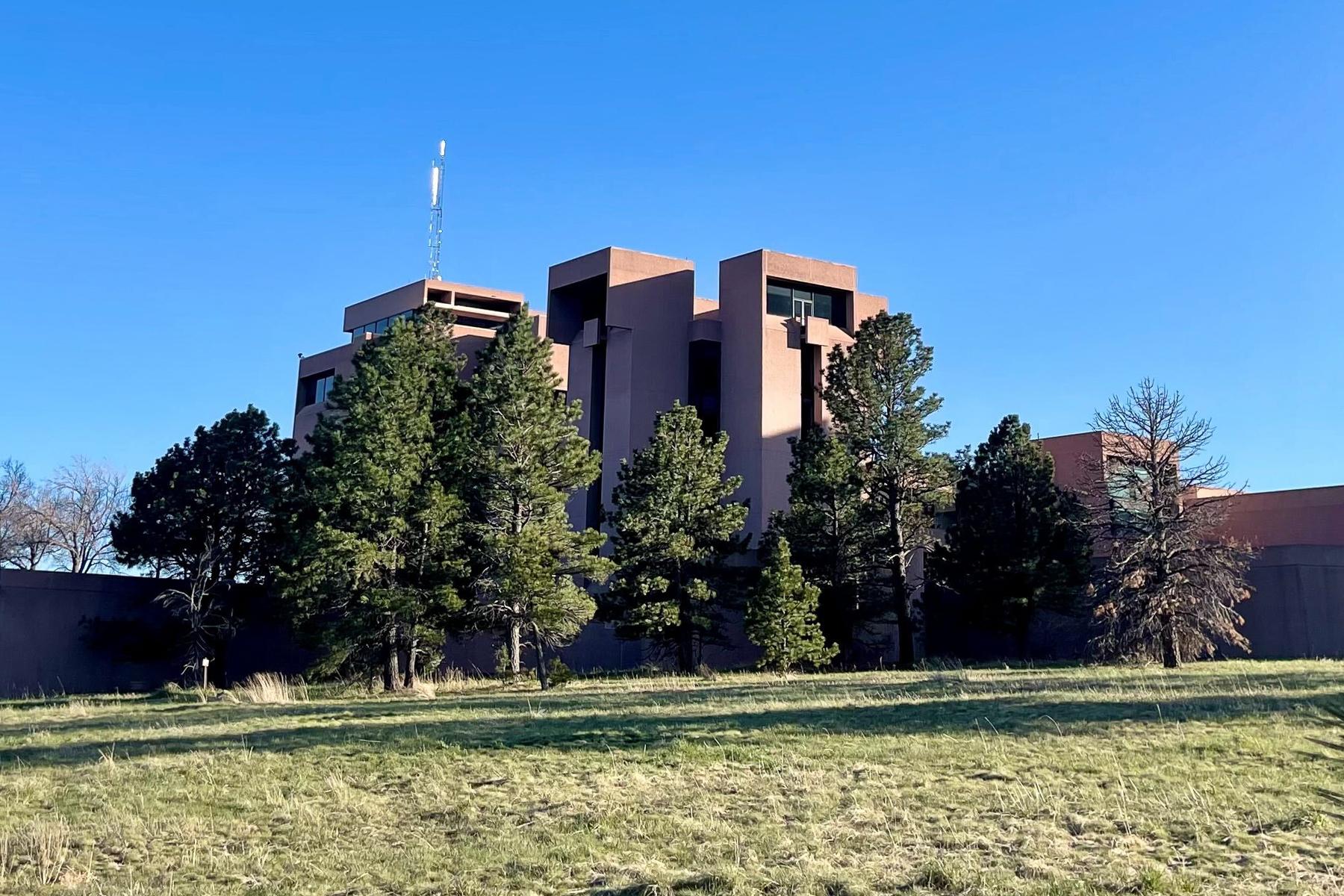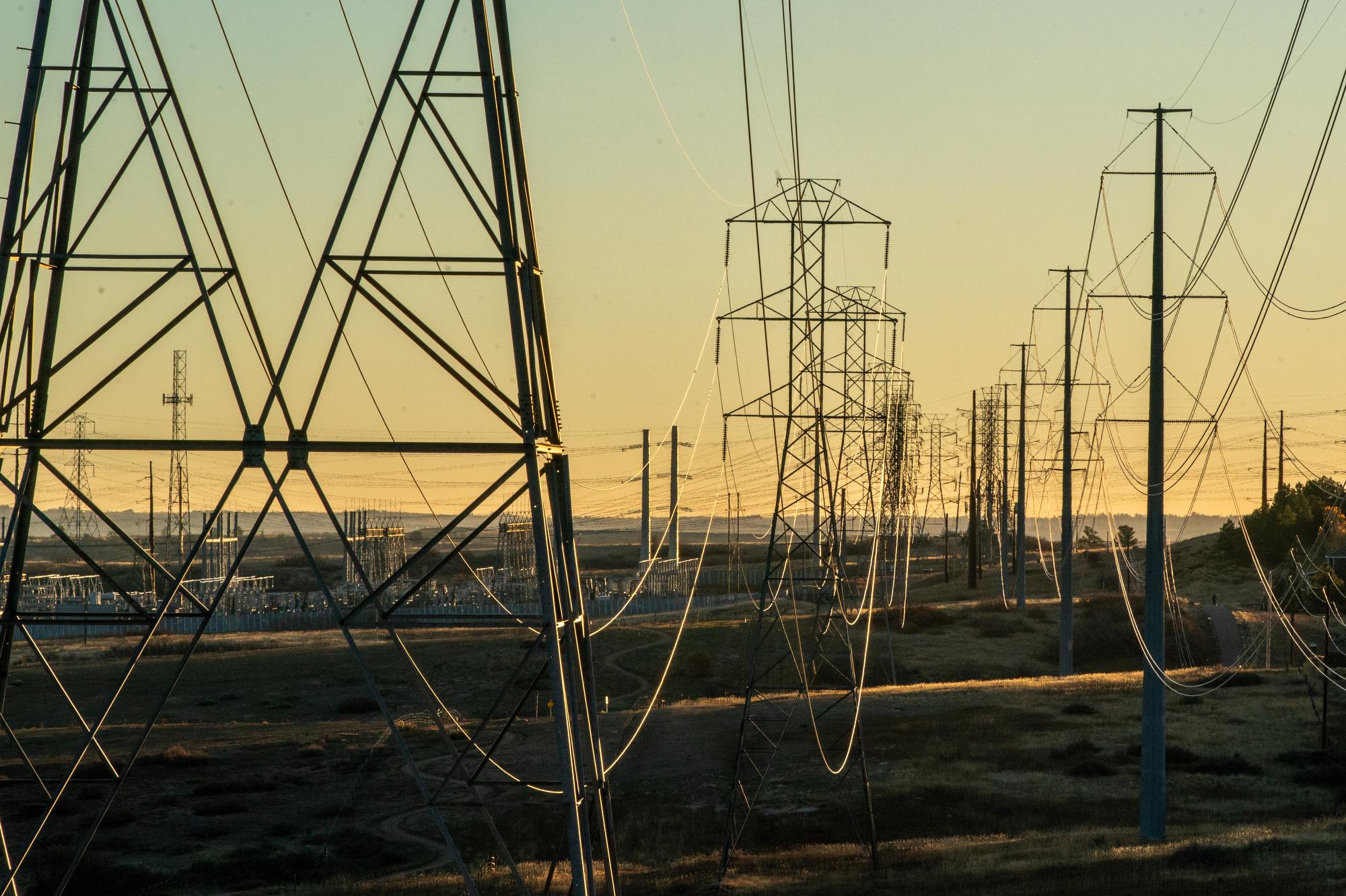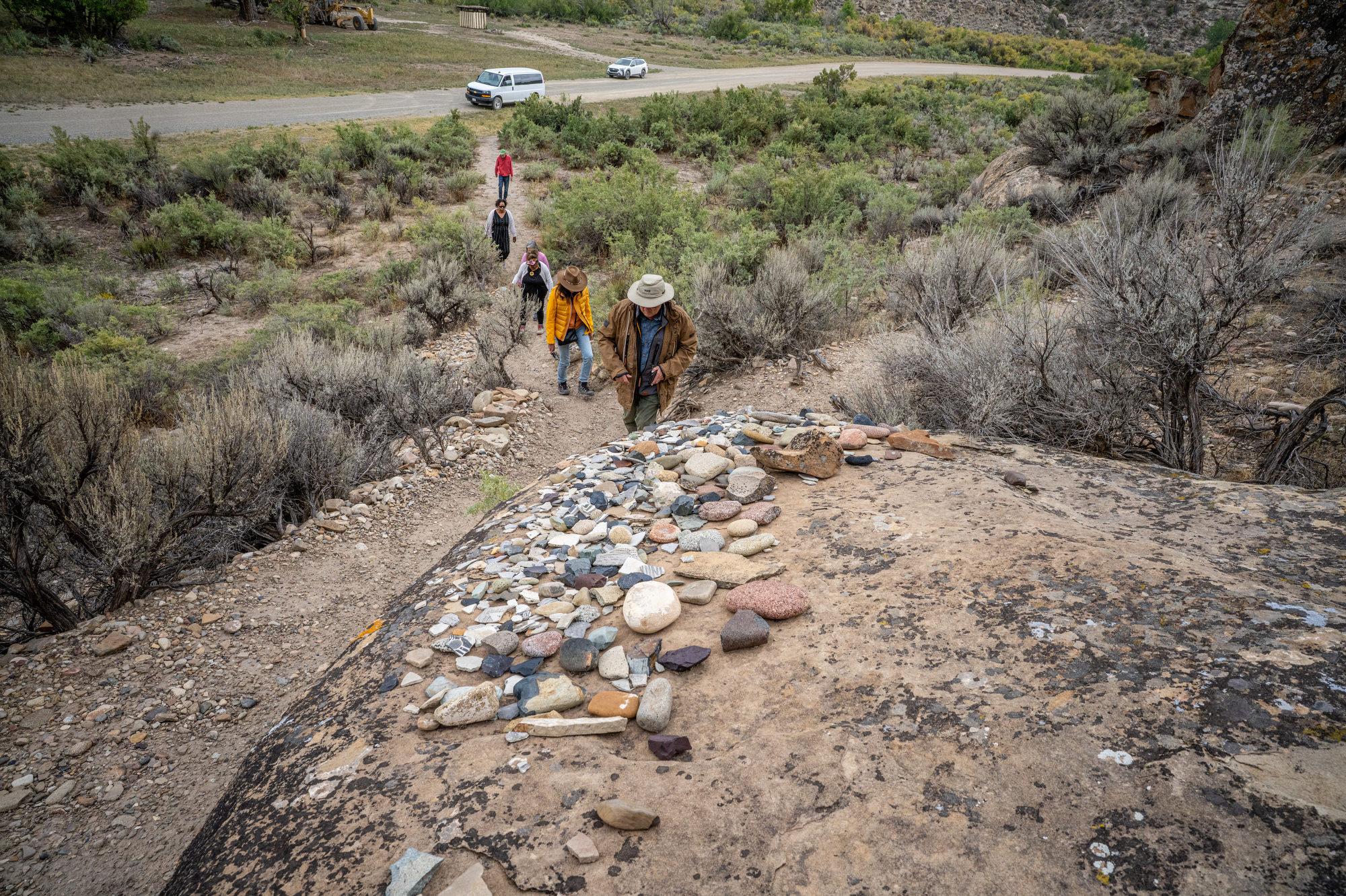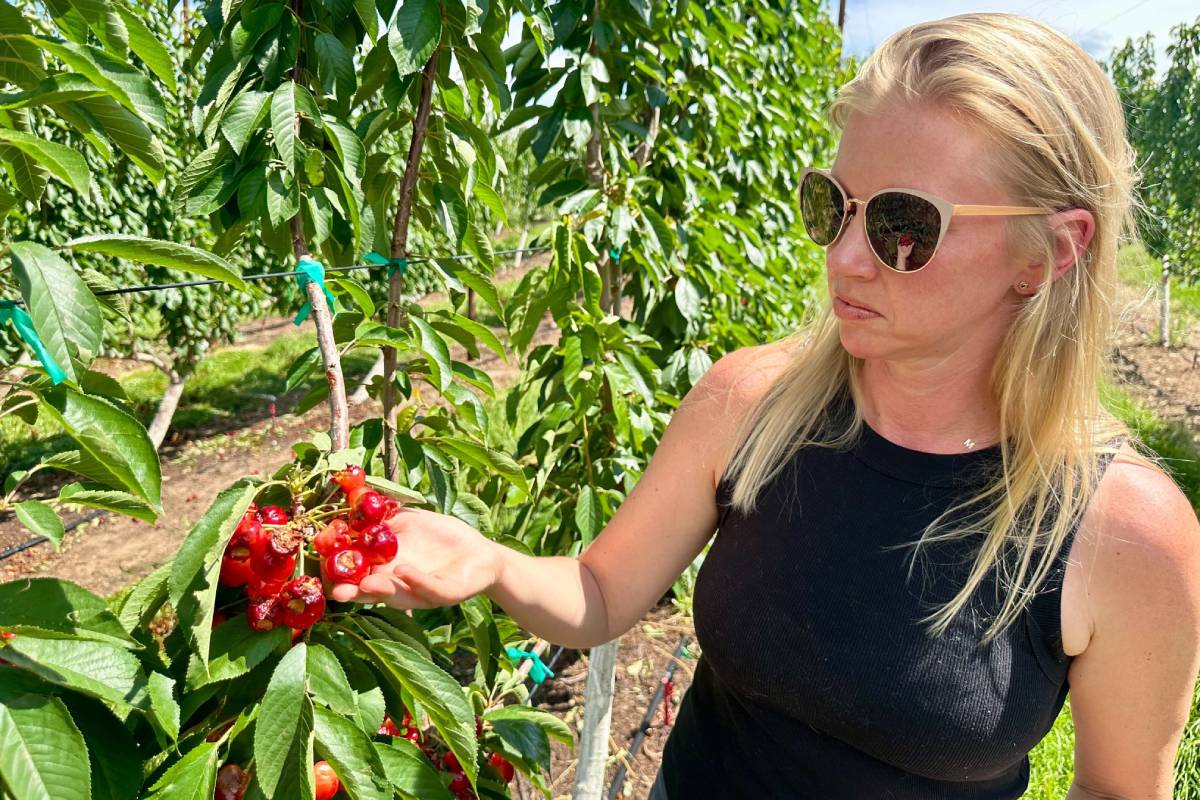
An evening storm last Friday bombarded parts of Mesa County in hail, taking tens of thousands of pounds of future food donations off the table in the process.
The storm pelted portions of the Grand Valley, sparing some orchards and pounding others. One area hit the hardest was Colorado State University’s Western Colorado Research Center site in Orchard Mesa, which produces and researches a variety of crops, most of which are now marked with dents on their northwest side, highlighting the direction of the evening storm.
“So far it looks like — in peach, apple, grape, cherry and vegetables — like total crop loss,” said David Sterle, a research scientist at CSU who focuses on pomology.
Often, hail is not a major contributor to crop loss in the area, though the last few years would say otherwise. “This is the second significant year with significant hail damage,” Sterle said, adding that the Orchard Mesa site saw hailstones up to a half-inch in size. “So it is pretty rare, but we've had it two years in a row now, so it's hard to say. In the last 10 years, we've had one other hail event that was not nearly as bad and this year is a lot worse than it was last year.”

At Mesa Park Fruit Company, a few miles east of the research center, the cherry crop was days away from harvesting before the hail damaged about half of it.
“It's just a huge bummer,” said co-owner Laura Black. “I mean, my husband (Brandon) and our guys … spend hours upon hours upon hours out here every week working these orchards and just blood, sweat, and tears into them. And to have a 10 minute hailstorm wipe out your entire year, it sucks.”
The research center is on the western edge of where fruit production is commercially viable, Sterle said, and as such, it usually gets the biggest impacts of poor weather. Frosts or storms that spare parts of Palisade are more acutely felt in the areas around the CSU facility. Given the damage, Sterle said a commercial operation would likely not bother picking for the season. But while CSU doesn’t have a roadside fruit stand to fill, their produce will still be missed this year.
Food grown at the Western Colorado Research Centers at Orchard Mesa and Rogers Mesa (located nearby in Delta County) is donated to food banks and pantries across the region.
Amanda McQuade, the community food systems coordinator at the Western Colorado Research Center, says their facilities yield around 90,000 pounds of food donations each year. With the hail damage in Orchard Mesa, that number will be lower this year, though McQuade said the donations are a fraction of what food banks take in.
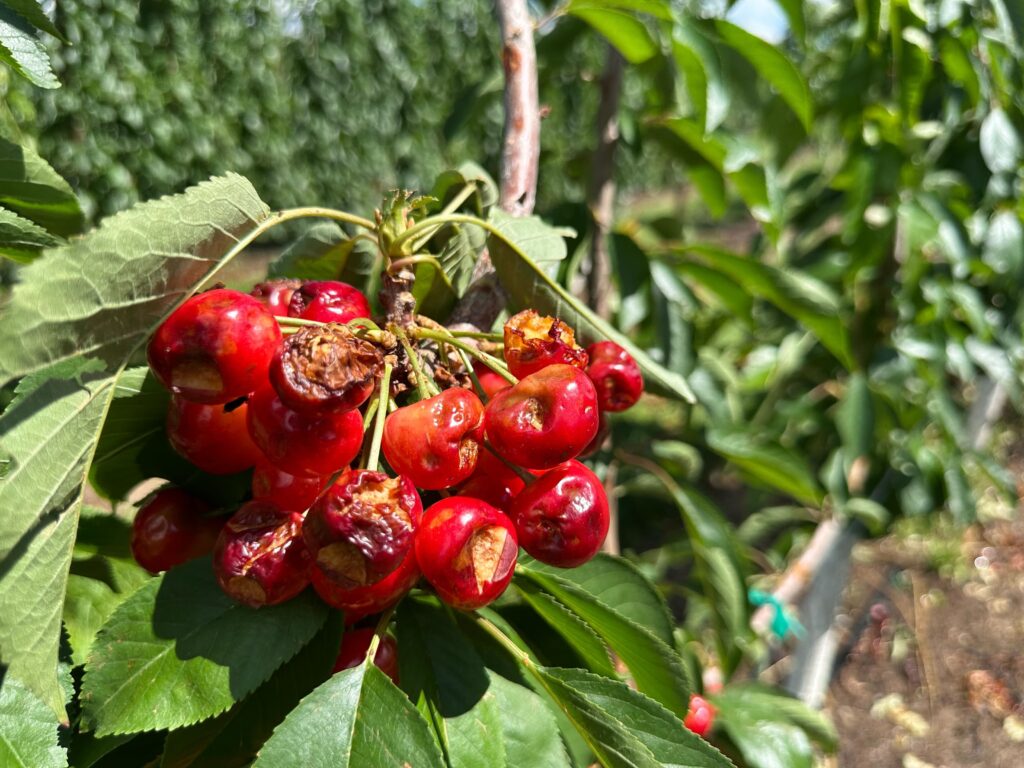
“They deal in millions of pounds a year. So while this is painful for our program and it will reduce the amounts that are in food pantries, the volumes that run through food banks and food pantries, there's so much that this shouldn't make or break them,” McQuade said.
The news comes as food assistance programs face uncertainty from federal spending cuts. In March, the United States Department of Agriculture canceled a food assistance program that subsidized produce purchases from local farms. The move, which has drawn legal challenges from other states, cost Colorado around $13 million, according to a March release from Gov. Jared Polis’ office.
Elsewhere in Colorado’s fruit country
While some areas of Mesa County reported hailstones larger than an inch in diameter, according to the National Weather Service office in Grand Junction, many major growers were spared.
Bruce Talbott, farm manager at Talbott’s Mountain Gold in Palisade, said their fruit, which includes peaches and wine grapes, is still in good shape for this point in the season.
“Fortunately, most of what we farm was outside of where the storm was, so we figured we lost about 40 percent of the fruit on about 5 percent of our production. So we're looking pretty good. But basically the guys west of about 33 1/2 Road on Orchard Mesa are beat up,” he said.
Sterle said most of the damage he’s heard of so far was closer to the Orchard Mesa side and not in Palisade.
“I've heard about one cherry crop that looks like it's 100 percent done, which is difficult because it's probably going to be harvested in the next week or two, so it's right next to almost ready fruit,” he said.
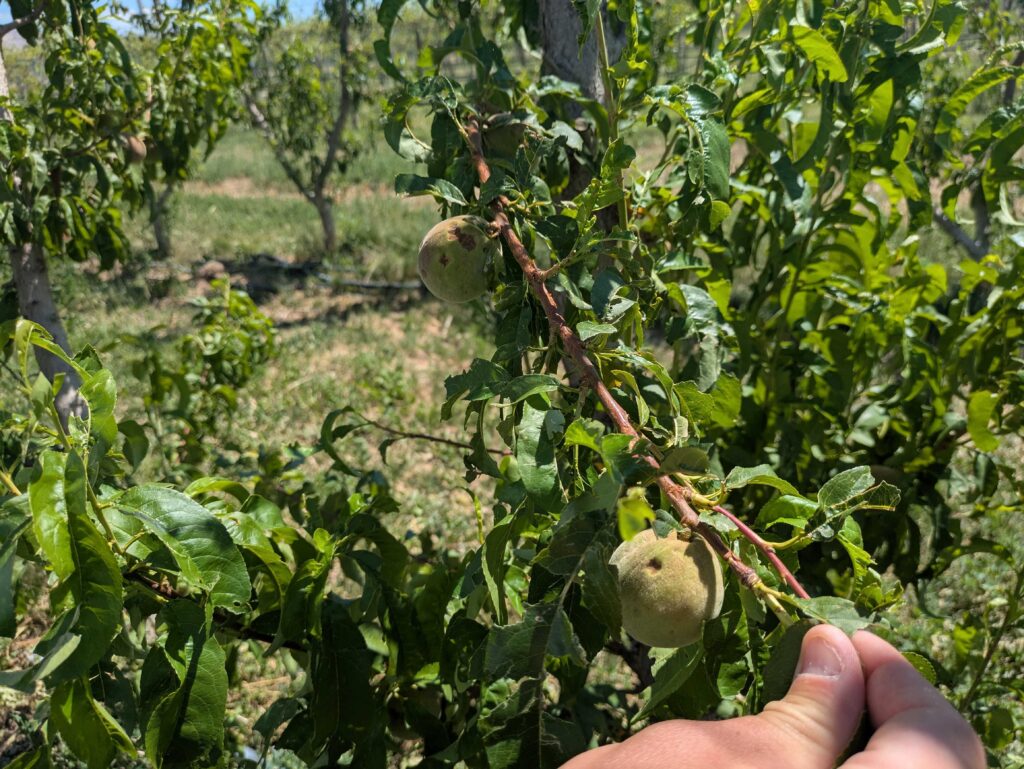
Laura Black, with Mesa Park Fruit, said despite the setback, she understands that crop losses are part of the cost of doing business. In fact, Black said, they’re relieved so many other growers were spared because it keeps the regional fruit brand strong.
“I am very thankful that it wasn't a valley-wide hail event that took out everyone's crop because we all need each other. And if nobody has cherries or nobody has peaches, people go elsewhere. And so I'm thankful that there's still a cherry crop in the valley this year,” she said.
At the CSU farm, the damage not only means a bleak outlook for this season, but serious questions about the health of future crops. Beyond dimpling fruit like a golf ball, the storm also damaged parts of the trees needed to produce the 2026 crop.
“A lot of those new shoots that are coming in have significant amounts of damage and that's where we're going to be growing next year's crop. So that is another source of concern. Disease can move into that damaged tissue,” Sterle said.

